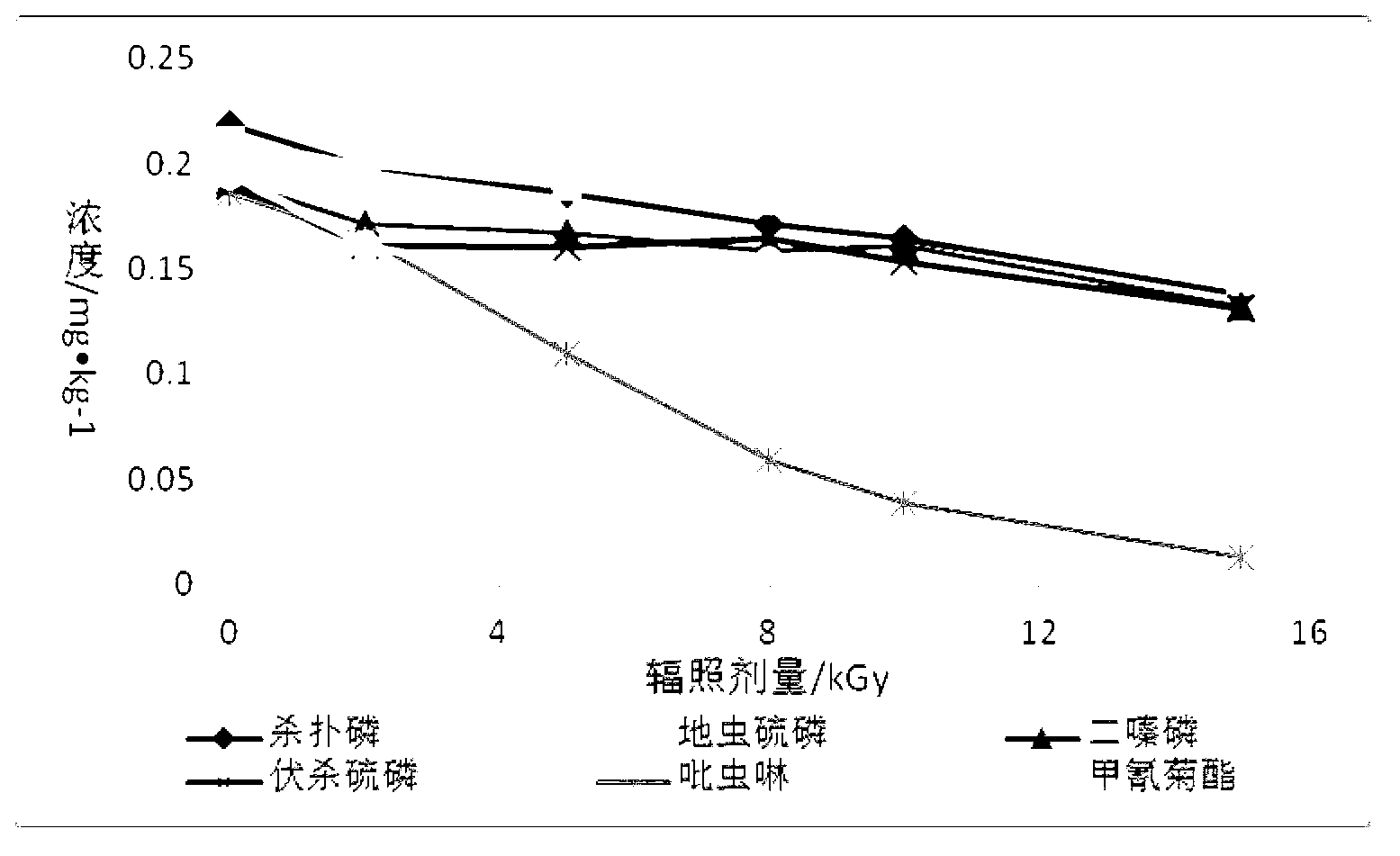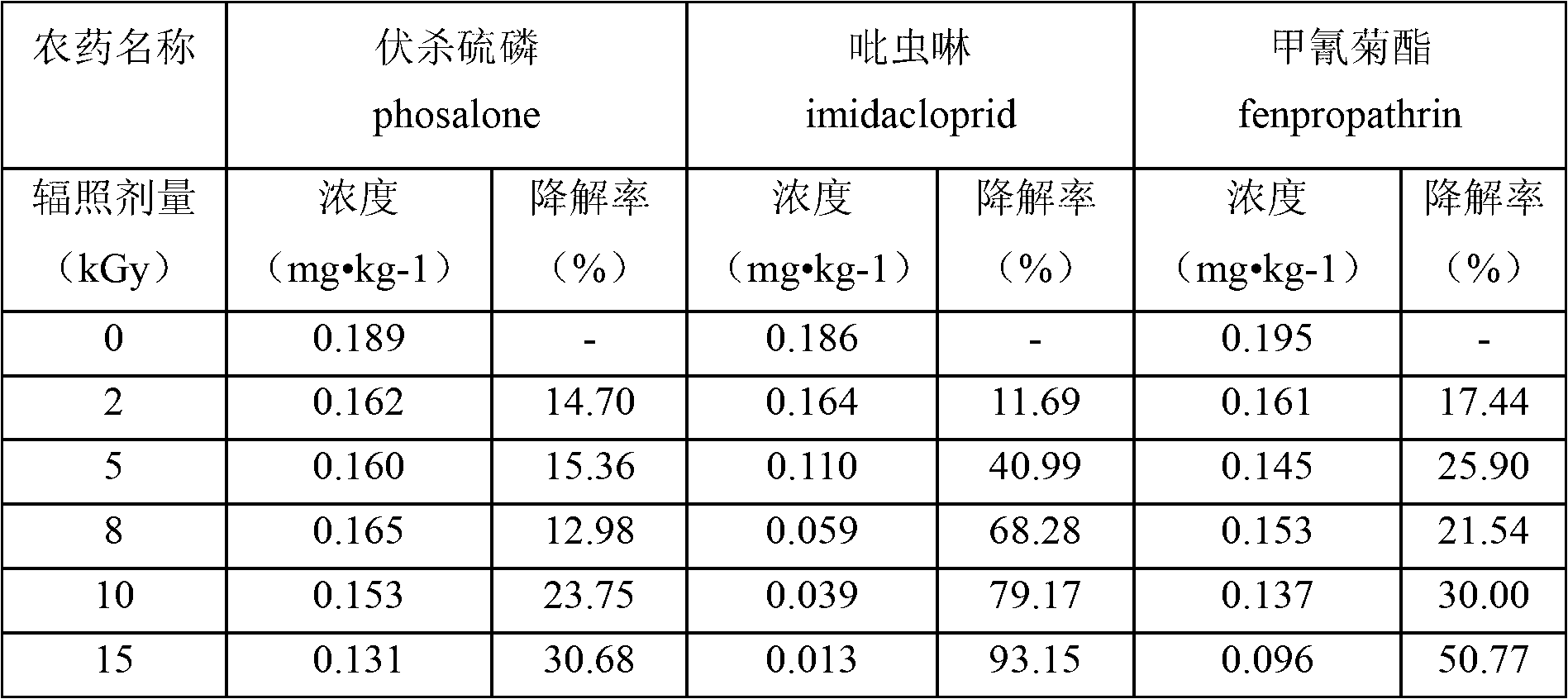Degrading method of pesticide residues in ginseng oral liquid by utilizing radiation
A technology of oral liquid and ginseng, which is applied in the field of radiation degradation, can solve problems affecting the safety of oral liquid use, and achieve the effects of fast reaction rate, wide adaptability, and high degradation efficiency
- Summary
- Abstract
- Description
- Claims
- Application Information
AI Technical Summary
Problems solved by technology
Method used
Image
Examples
Embodiment 1
[0023] A kind of irradiation processing method of ginseng oral liquid:
[0024] Select the ginseng oral liquid commodity of 10mL brown bottle on the market for use, and this commodity does not contain six kinds of pesticides such as methadon involved in the present invention through inspection. The selected six kinds of pesticide standard solutions to be tested were added to the ginseng oral liquid commodity with reference to the limit standards of countries such as the European Union, and the added concentration was about 0.200 mg / kg. Three parallel samples were set up during irradiation, and a blank control was set up at the same time. The ginseng oral liquid sample added with the above solution was placed under the irradiation window of an electron accelerator, irradiated with a dose of 5 kGy, and the electron accelerator was turned on for electron beam irradiation.
[0025] After the sample solution before and after irradiation was extracted by the following pretreatment ...
Embodiment 2
[0036] The irradiation dose in Example 1 was changed to 15kGy, and all other conditions were unchanged. The degradation rate of imidacloprid is greater than 90%, which belongs to significant degradation, the degradation rate of fenpropathrin is greater than 50%, and the degradation rates of the other four pesticides are also more than 30%.
[0037] The data of Examples 1-2 are detailed in Table 1.
Embodiment 3
[0039]In Example 1, the irradiation dose was changed to 10kyG, the additive dose was changed to 0.05mg / kg, and the rest of the conditions remained unchanged. The degradation rate of tefenthion is 14.6%, and the residue is 0.043mg / kg, which is in line with the EU and other countries' residue limit standards.
PUM
 Login to View More
Login to View More Abstract
Description
Claims
Application Information
 Login to View More
Login to View More - R&D
- Intellectual Property
- Life Sciences
- Materials
- Tech Scout
- Unparalleled Data Quality
- Higher Quality Content
- 60% Fewer Hallucinations
Browse by: Latest US Patents, China's latest patents, Technical Efficacy Thesaurus, Application Domain, Technology Topic, Popular Technical Reports.
© 2025 PatSnap. All rights reserved.Legal|Privacy policy|Modern Slavery Act Transparency Statement|Sitemap|About US| Contact US: help@patsnap.com



